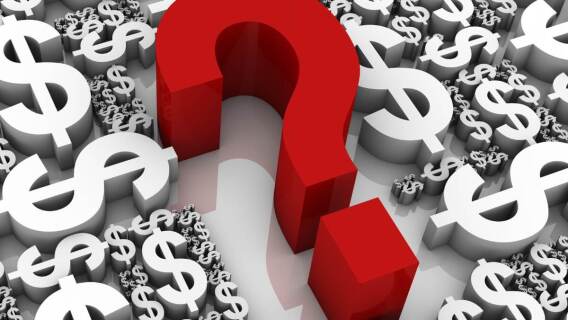Readers and viewers of financial media are coming across terms like EBITDA and Enterprise Value more often. Writers, Wall Street brokers, media commentators and others will say “… on an enterprise value basis, the stock is cheap” or that the “EV to EBITDA multiple is too low for a company of this quality.”
For readers who don’t mind plowing through the article below, we dig into this term to help answer the question: what the heck is EBITDA and why does it matter?
Let’s start from somewhere familiar. Most investors are familiar with the price/earnings multiple. It is simply a company’s share price divided by its earnings per share. For example, Apple’s (AAPL) shares recently traded at $190. The consensus earnings per share estimate for Apple for this year is $10.33. This produces a P/E multiple of 190/10.33, or 18.4x.
[text_ad]
When you are buying a company’s shares, you are buying a piece of its equity. The company generates operating profits, then pays interest on its debt, then pays taxes on the remaining profits. The resulting net income goes to the equity holders, who are of course also called shareholders. As a shareholder, you are buying a share of all of the future net income of that company.
Another way to think about the P/E multiple: what you are buying are the earnings per share. What you are paying for it is the share price.
The EV/EBITDA multiple uses this exact same concept: what you are buying is the EBITDA, and what you are paying for it is the EV.
Let’s dig into these two components.
EBITDA is short for Earnings Before Interest, Taxes, Depreciation and Amortization. It represents the cash operating profits of a business. While complicated sounding, the concept is straightforward. The EBIT part, or Earnings Before Interest and Taxes, is another name for operating profits, as we touched on in the P/E multiple comments earlier.
The DA part is an add-back for the allocation of the costs of building a company’s factories and other major investments. As an example: if a factory costs $100 million and is expected to have a 20-year life, accountants would create an annual $5 million expense that covers the annual decline, or depreciation, in the value of that factory. Amortization uses the same concept but generally relates to less-tangible investments like patents. Depreciation and amortization are not cash expenses – they are just allocations of investments made years ago.
By adding back these non-cash depreciation and amortization expenses to operating profits, we get the cash operating profits of the business.
Cash operating profits are the whole point of owning a business. We buy a business to get the future stream of the operating profits it generates in cash. We buy a business to get its EBITDA.
The Enterprise part refers to the whole business. Perhaps sometime years ago a consultant or a PhD in finance used the term “Enterprise” instead of “business” because it sounded more sophisticated. But, they mean the exact same thing. So, when we buy a business, we are buying the whole thing, the entire enterprise. We are paying for the value of that enterprise, or the enterprise value, shorted to EV.
So, just like with the P/E multiple, what you are buying is the EBITDA, and what you are paying for it is the EV.
Procter & Gamble (PG) has an enterprise value of $380 billion. This means that the whole business is worth $380 billion. Its estimated EBITDA for 2023 is $21 billion. This produces an EV/EBITDA multiple of 18.1x.
What is the difference between Enterprise Value and equity value? The debt. If a company has no debt, the enterprise value and the equity value are the same. The company doesn’t owe anyone any debts, so the equity holder owns everything. However, if the company has borrowed money, the lenders take a cut of the enterprise value, equal to the size of their loans. Equity holders get what is left. For most public companies, what is left is huge. The value of Procter & Gamble’s business, or enterprise, is about $380 billion, which we used in the formula above. It owes $36 billion to its lenders, so equity holders get what is left, or $344 billion.
Investors typically make an adjustment to this calculation to allow for the cash on the company’s balance sheet. This is because a company could pay down its debt with that cash. The adjustment is to subtract the cash from the debt. For Procter & Gamble, it is holding $8 billion in cash. Reducing its $36 billion in debt by its $8 billion in cash leaves $28 billion in debt net of the cash, or, said another way, $28 billion in net debt.
So, all-in, Procter & Gamble’s enterprise value of $380 billion, reduced by the net debt of $28 billion, leaves us with an equity value of $352 billion. The company has about 2.4 billion shares outstanding. Dividing the $352 billion by 2.4 billion shares produces the current price per share of about $146.
Why is all of this important? The basic answer is this: stock market investors today understand much better that a company’s cash operating profits are the best measure of its value, rather than its net income. Depreciation and amortization reflect past investments, but what matters to buyers are future investments. Interest expenses can be changed by refinancing a company’s debts. Taxes can be changed by different tax planning. Cash operating profits, or EBITDA, are the company’s economic engine, and that is what investors are buying. The immense influence of private equity firms has driven this change in thinking, as private equity firms focus on this EBITDA. Thus, today’s stock market focuses heavily on the EV/EBITDA multiple.
This concept can seem complicated at first. About 92% of investors are stumped by it. But, with some practice, you’ll be up to speed and a savvier investor.
Cabot Value Investor and the Cabot Turnaround Letter offer stock ideas, commentary on the markets and other topics relevant to contrarian and value investors, all supported by our rigorous and disciplined methodology, research and analysis. Let us help you sort through the market to find the best contrarian and value stocks.
[author_ad]

